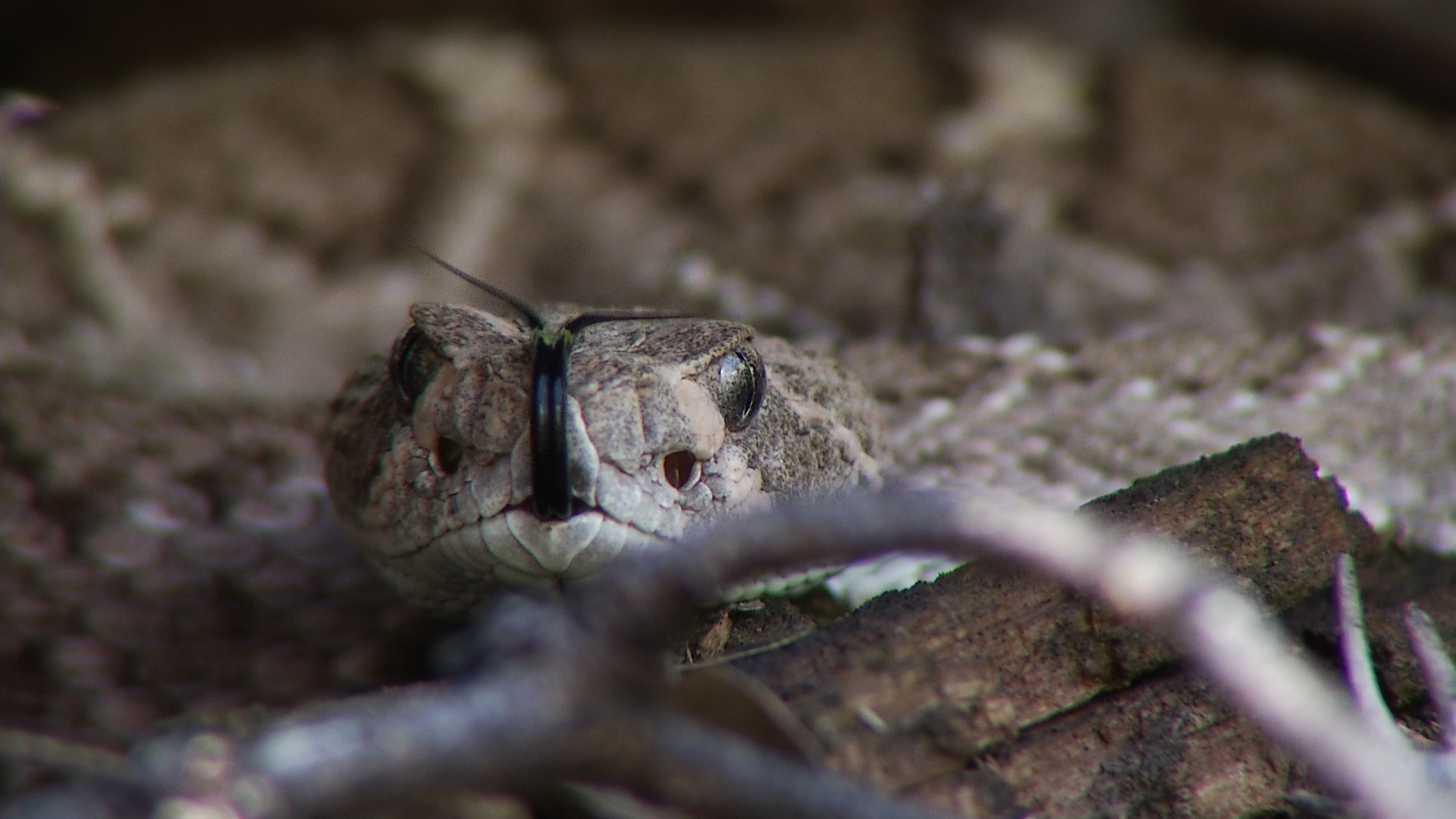 A diamondback rattlesnake flicks its tongue.
A diamondback rattlesnake flicks its tongue.
As more people move to the Grand Canyon State, infrastructure continues to expand outward. With more people, comes more cars and an interest in freeway expansion for projects like the Interstate 11 corridor.
The proposed project, which doesn’t have a clear timeline, would run from Wickenburg to Nogales and could potentially connect to I-11 in Nevada. However, a portion of the project cuts through desert land, which experts say could cause continuing concerns for wildlife, such as rattlesnakes. Over a dozen species live in Arizona.
Adam Stein is an assistant teaching professor at Arizona State University and teaches a class on ecosystem management. Stein has discussed the I-11 freeway in his class, including the frustrations he feels toward commuting in Phoenix.
“I have to replace my windshield probably twice a year with rocks from these large machines coming through and spitting it up,” Stein said. “I think everybody feels that type of frustration, and a solution to that may be to divert some of this traffic that’s flowing through Phoenix down to Tucson, down to areas further south, outside of these areas, and open that congestion to make it safer for commuters like me.”
Stein said it sounds like a great deal on the surface but actually disrupts biodiverse desert landscapes, some of the last deserts in the U.S.
“We can think about the most immediate issue with roads, in the sense that they are blocking movements from animals from one side of the highway to the other, where there might be resources or potential interactions,” Stein said. “For especially slow-moving organisms, that is going to be a big trap.”
Stein said roadways attract certain reptiles for thermal regulation because they’re cold-blooded, which puts them at risk of being run over.
And a lower rattlesnake population could cause issues, said Bryan Hughes, owner of Rattlesnake Solutions.
“If we didn’t have rattlesnakes here, people would probably miss them. Not because they miss snakes, but rodent problems would increase, disease would become more prevalent in ways that we probably don’t understand,” Hughes said.
Hughes said wildlife displacement is something that happens repeatedly in Arizona.
“Every time a ground breaks in one of these communities, we see the same mistakes that are made with development that does not help prevent wildlife conflict, not just with rattlesnakes but coyotes and javelina,” Hughes said. “It just looks like we’ve done this before, it’s Groundhog Day.”

By submitting your comments, you hereby give AZPM the right to post your comments and potentially use them in any other form of media operated by this institution.